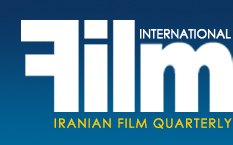|
Interview with Khosrow Ma’soumi about his trilogy as "The Wind Twists in the Meadow" hits the screens:
Inexpensive Filmmaking, the Best Solution to Thoughtful Cinema
by Mohsen Beigagha
|
Public screening of The Wind Twists in the Meadow was an end to Khosrow Ma'soumi’s trilogy, which started with Tradition of Killing the Lovers (2003) and continued with A Faraway Place (2005). He was originally willing to continue with the series, but then changed his mind when critics urged him not to do so. After making Leaden Times (1988) Ma'soumi was not able to repeat that success for many years. In his trilogy, he delivers a different picture of the nature seasoned by love and violence. All three episodes have received international acclaim. He is indignant with limited screening of his films in Iran and maintains that film screening and distribution mafia does not allow his films to be appreciated.
Film International: You have already produced urban films. What made you change your mind and make films at villages depicting rustic ambience, snow covered fields and wood smugglers?
Khosrow Ma'soumi: After making my second film, Leaden Times, which was the third choice of critics in its time, I failed to do more works along the same line because that film was a box office failure and I was the producer. I made Mr. Governor (1991) because I was cash-strapped. Though it was an urban film with crowded cast, it also failed at the box office. Then I worked for the Welfare Organization and also made The Night Journey (1997) for Sima Film. It was about a boy looking for his lost father at the warfronts. Due to limited public screening, it was largely ignored by critics. My friend, Kiyanoush Ayyari, told me, “You are now called ‘Maker of non-selling rustic movies’. Try to prove that you can also make bestsellers!” Therefore, we joined to write A Wing to Fly (2001) screenplay and Ayyari edited it. The film’s sales were good, but I was not satisfied and thought that I was on the wrong track!
FI: So, Tradition of Killing the Lovers aimed to correct that mistake?
KM: It was not as simple as that. All producers rejected screenplay of that film and said it would be another box office failure. They were not ready to hear my comments that it was a film about beautiful scenes in north Iran and also focused on destruction of forests and ecosystem due to unemployment and poverty of the local people. I even told the producer of A Wing to Fly that I was ready to make the film on 50,000 dollars, but he rejected my offer and proposed another screenplay which was similar to A Wing to Fly, but I didn’t want to do it. Another producer, at last, liked my screenplay. I told him that I had already made a film on 22,000 dollars (The Night Journey) and I was prepared to make the new film on 50 million tomans.
FI: If it was so inexpensive, why you didn’t produce it on your own?
KM: Because I had no money and 50,000 dollars was too much for me. I told two producers to pay my salary as director and screenwriter after the public screening and I did not even sign a contract with them. I thought if a film were made on a modest budget, it would return the initial capital and won’t fail at the box office. I had already worked with Gohar Kheirandish and Hossein Mahjoub (actors) and they did not object when I offered them lower pay. Nader Ma'soumi, the director of cinematography, was my friend and sound recordist accepted to get less than usual. Set design was done by my brother. Then, we started shooting at a snow covered village called Nimvar. It was the location of a destroyed forest. After shooting was over, I took the producer to a studio which belonged to Arts Department of the Islamic Propagation Organization and he liked the film and was ready to write the contract. I had asked for 5,000 dollars, but he gave me 12,000 dollars. I had spent 22,000 dollars on the film and I had money left to do more. Therefore, I asked Peiman Yazdanian to compose the score...
[Page: 68]
|
|
|
|
|
President & Publisher
Massoud Mehrabi
Editors:
Sohrab Soori
Translators:
Sohrab Soori
Behrouz Tourani
Zohreh Khatibi
Contributors
Saeed Ghotbizadeh
Mehrzad Danesh
Advertisements
Mohammad Mohammadian
Art Director
Babak Kassiri
Ad Designers
Amir Kheirandish
Hossein Kheirandish
Cover Design
Alireza Amakchi
Correspondents
E.Emrani & M. Behraznia (Germany)
Mohammad Haghighat (France)
A. Movahed & M. Amini (Italy)
Robert Richter (Switzerland)
F. Shafaghi (Canada)
B. Pakzad (UAE)
H. Rasti (Japan)
Print Supervisors
Shad-Rang
Noghreh-Abi
Gol-Naghsh
Subscription & Advertising Sales
Address: 10, Sam St., Hafez Ave., TEHRAN, IRAN
Phone: +98 21 66722444
Fax: +98 21 66718871
info@film-magazine.com
Copyright: Film International
© All rights reserved,
2023, Film International
Quarterly Magazine (ISSN 1021-6510)
Editorial Office: 5th Floor, No. 10
Sam St., Hafez Ave., Tehran 11389, Iran
Printed in Tehran
Publishing Date Winter 2011
*
All articles represent views of their
authors and not necessarily
those of the editors
|
|
|

